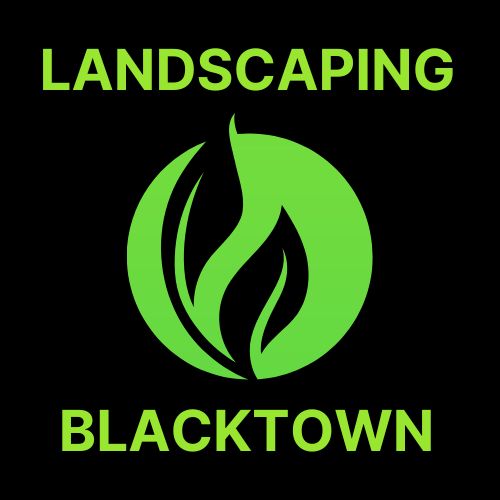Designing a thriving garden in Western Sydney starts with understanding your environment. Western Sydney experiences hot, dry summers, mild winters, and clay-heavy soils that can be slow-draining and tricky to manage. Choosing native plants is a smart move because they are naturally adapted to these conditions. Native species require less water, less maintenance, and are more likely to thrive long-term. In this guide, we grouped native plants based on their landscaping role to help you plan smarter and plant better. Whether you’re creating privacy, softening hardscapes, or adding bursts of colour in your yard, these plants will help you build a garden that flourishes with little effort.
Shade Trees
Shade trees are essential in reducing heat, creating cooler microclimates, and adding long-term structure and height to your outdoor space. These native varieties listed below are beautiful and tough enough to handle Western Sydney’s hot summers and clay-heavy soils.
Forest Red Gum (Eucalyptus tereticornis)
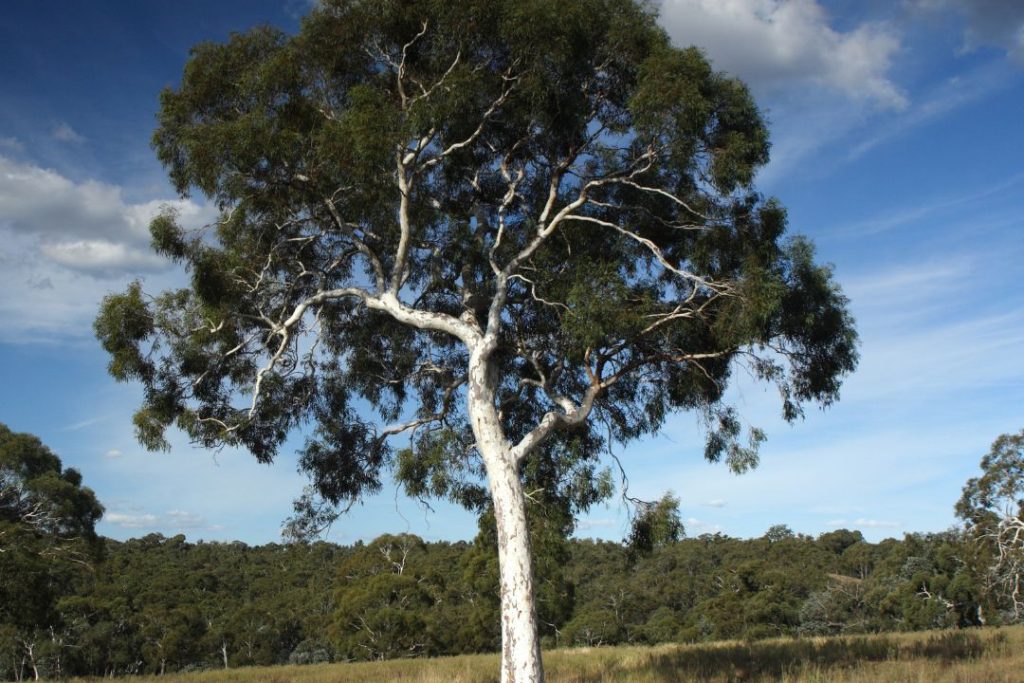
A classic Sydney-native gum, Forest Red Gum is a tall, stately tree reaching up to 30 metres. It thrives in full sun and has excellent drought tolerance, making it perfect for hot and dry yards. Its smooth, pale bark peels attractively, and the canopy provides generous shade. With minimal maintenance requirements and high ecological value for birds and insects, it’s a strong contender for those wanting a true Aussie icon in their garden.
Coast Banksia (Banksia integrifolia)
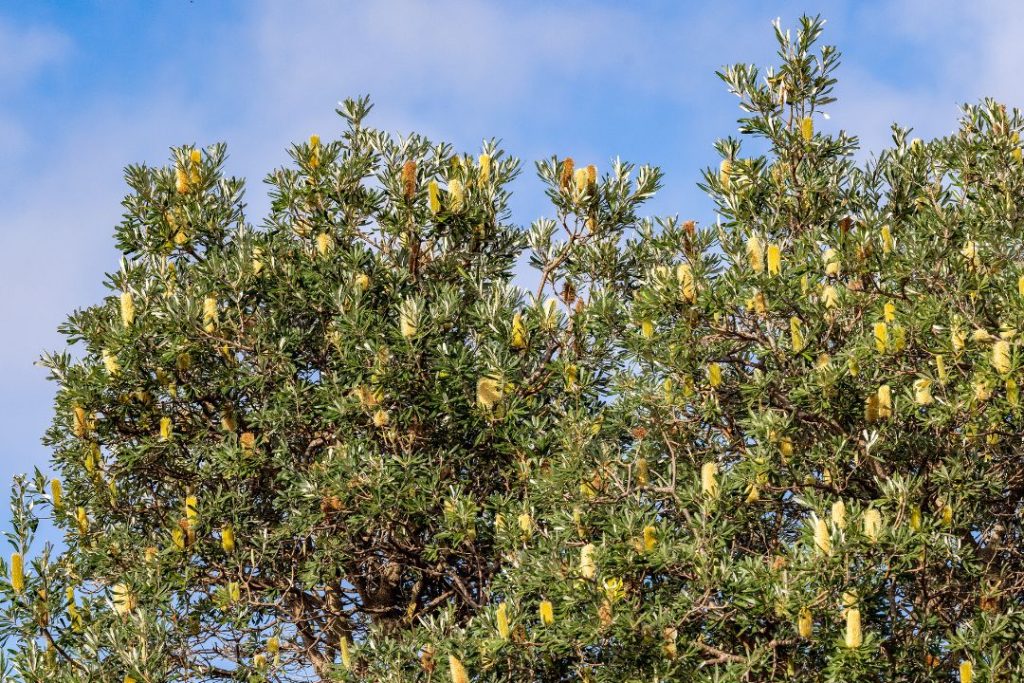
Coast Banksia is a hardy, medium-sized tree that grows up to 15 metres and suits full sun positions. Known for its striking flower spikes and leathery, toothed foliage, it’s a magnet for birds and bees. Though it prefers well drained soils it can adapt to clay soils with some amendments. Coast Banksia is low-maintenance and a standout choice for coastal-inspired or wildlife-friendly gardens.
Spotted Gum (Corymbia maculata)
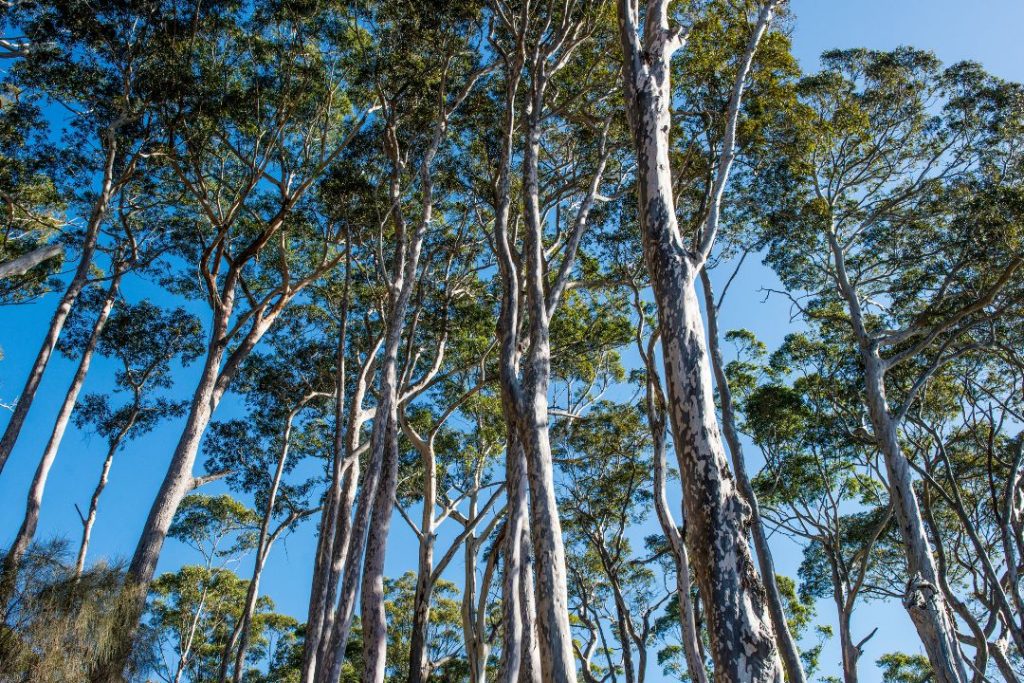
This tall and elegant gum tree is known for its distinctive spotted bark and upright trunk. It can reach up to 25 metres and is well-suited for large gardens needing shade and structure. Spotted Gum thrives in full sun and is highly drought-tolerant once established. It is often planted in parks and along streets for its stately appearance, and while it may occasionally drop limbs, its beauty and resilience make it a standout in native landscapes.
Screening & Hedging Plants
Screening and hedging plants are great for creating privacy, buffering wind or noise, and adding structure along fences or boundaries. Native options give you a softer and more natural look compared to harsh, man-made barriers like fences. In smaller suburban yards, where space is limited, these plants can also help define zones and create a private backyard.
Lilly Pilly (Acmena smithii)
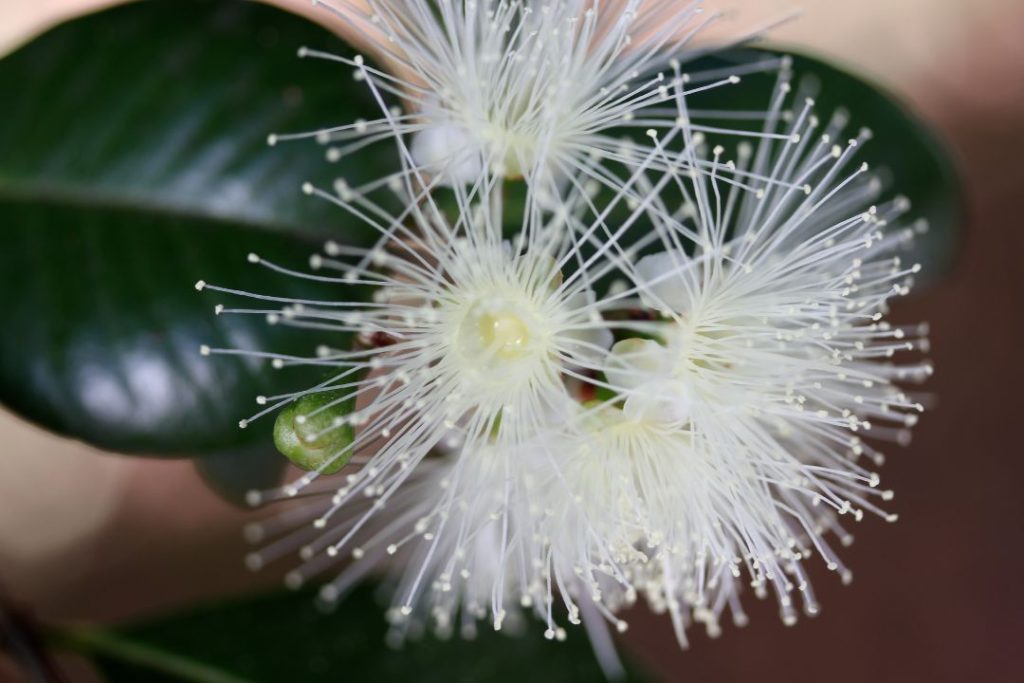
Lilly Pilly is one of Australia’s most popular choices for hedging and for a good reason. This shrub can grow from 2 to 5 metres tall, depending on how you prune it. It thrives in full sun to part shade and handles drought well, although it needs the occasional deep watering. Its dense green foliage provides excellent privacy, and the fluffy white flowers, followed by edible pink berries, are a bonus. You can also prune it into a formal hedge or leave it more natural for a softer look.
Coastal Rosemary (Westringia fruticosa)
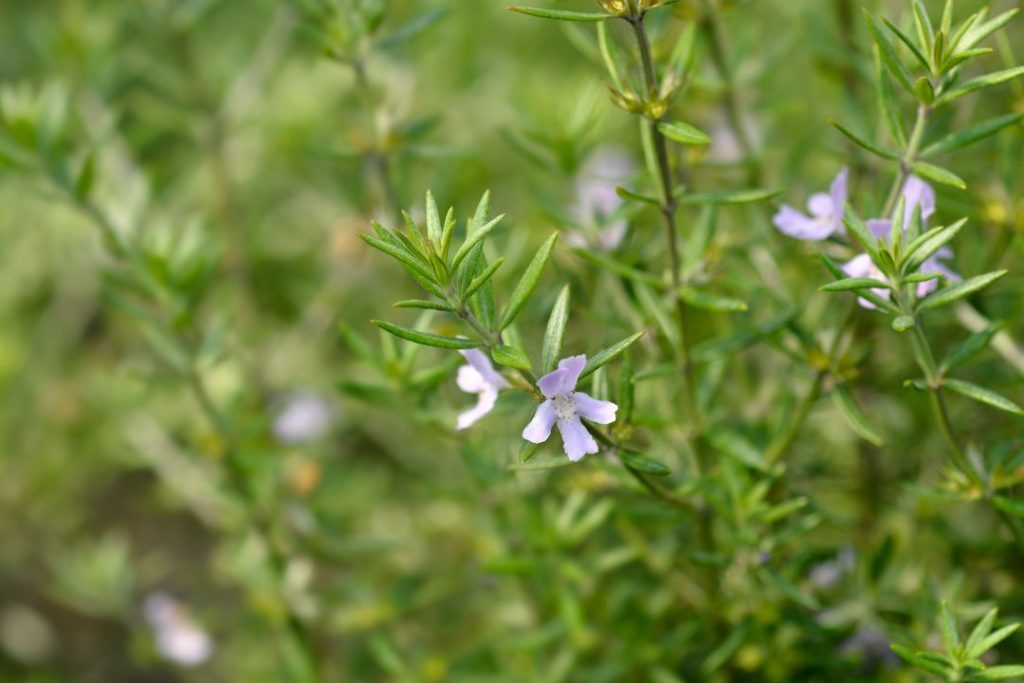
For a hardy, low-maintenance hedge, Coastal Rosemary is a standout. Growing up to 1.5 metres tall and wide, this dense shrub loves full sun but can also be in part shade. It’s highly drought-tolerant and well-suited to exposed, windy spots, where other plants may struggle. Its grey-green foliage has a lovely soft texture, and it produces small white to purple flowers throughout the year, which add subtle colour. Coastal Rosemary takes well to regular trimming if you want a neat shape, but also looks great even if you leave it a bit wild for a native garden feel.
Weeping Bottlebrush (Callistemon viminalis)
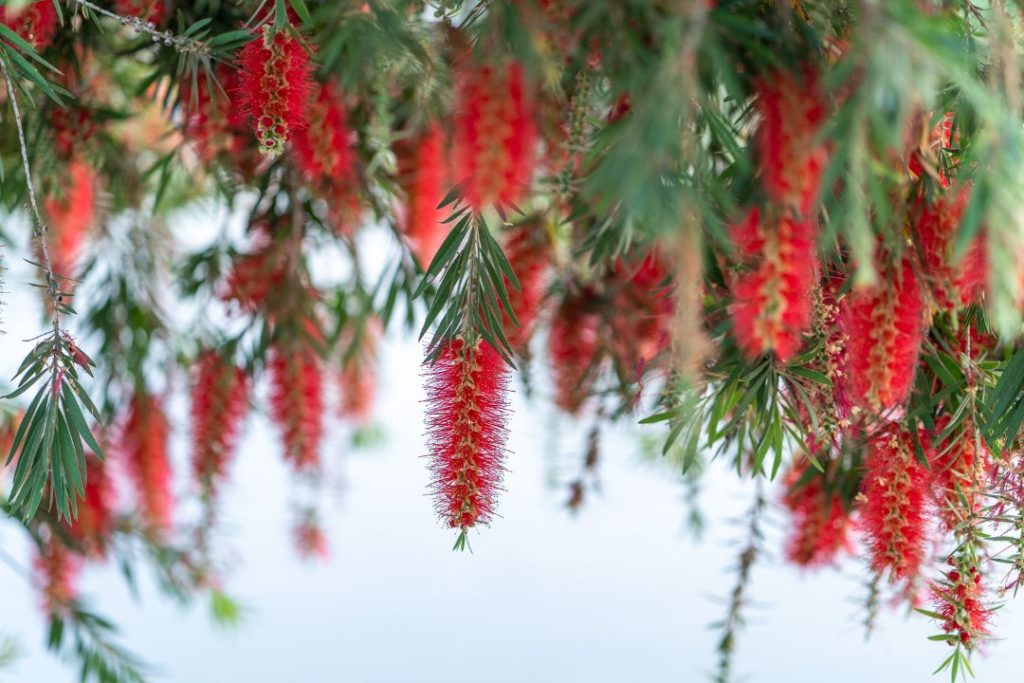
The Weeping Bottlebrush is a showy option for screening with its graceful arching branches and vibrant red bottlebrush flowers. Growing up to 7 metres tall, it thrives in full sun and copes well with Western Sydney’s heat and clay soils. This plant is a magnet for birds and pollinators, adding movement and life to your garden. While it’s drought-tolerant once it matures, it benefits from occasional watering during dry spells. Light pruning after flowering helps maintain its shape and encourages a denser screen.
Blueberry Ash (Elaeocarpus reticulatus)
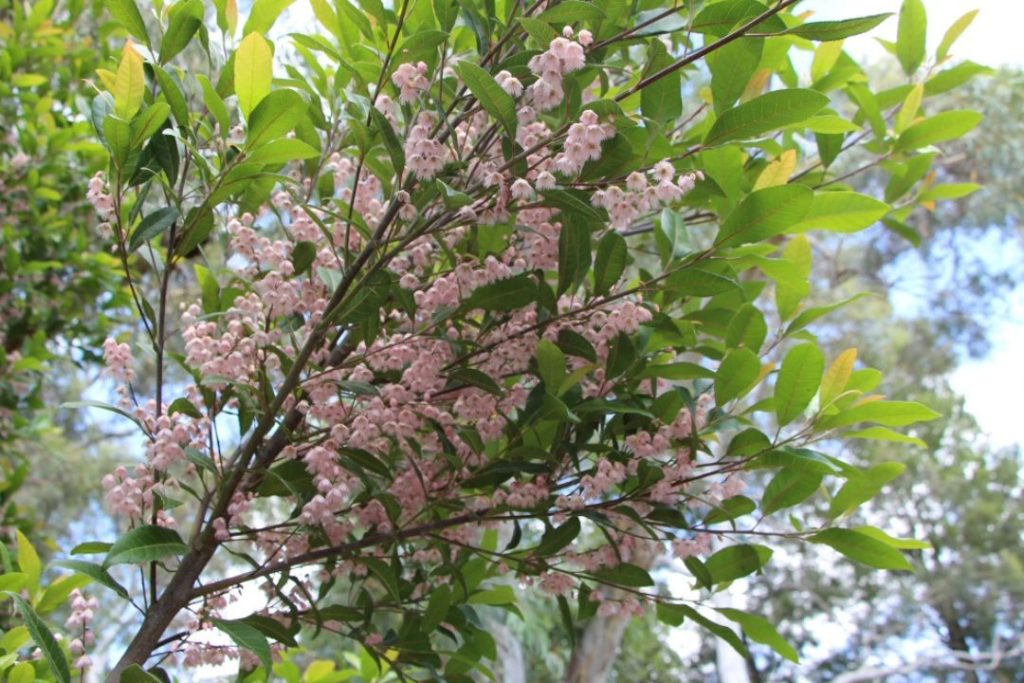
Image credit: https://gardeningwithangus.com.au/elaeocarpus-reticulatus-prima-donna-blueberry-ash/
Blueberry Ash is elegant and versatile, and can be grown as a tall shrub or small tree. It reaches a height between 3 to 8 metres, depending on how it is maintained. It thrives in full sun to part shade and handles dry conditions well once it is established. Its standout features are the delicate fringed pink or white flowers that bloom in spring, followed by striking blue berries that birds adore. Blueberry Ash makes a beautiful, soft-textured hedge or screen.
Mock Orange (Murraya paniculata)
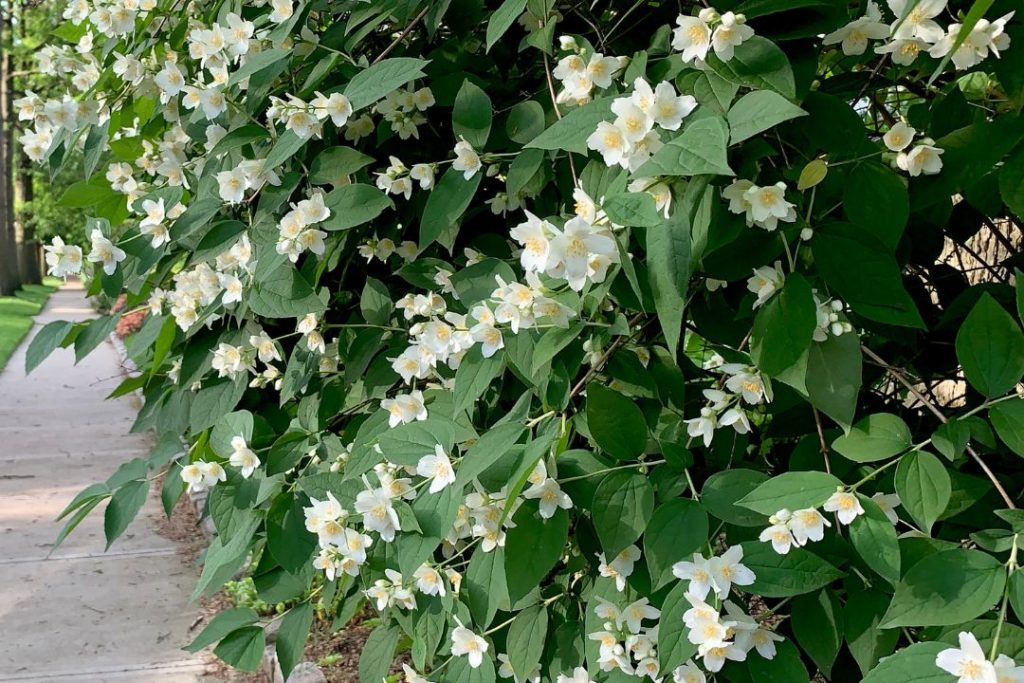
While it may not be strictly native, Mock Orange deserves an honourable mention for screening in Western Sydney gardens. It grows up to 3 metres tall, thrives in full sun to part shade, and produces fragrant white flowers in spring and summer. Its glossy green leaves form a dense screen, perfect for privacy. Murraya is drought-tolerant and responds well to pruning, making it a popular choice for formal hedging.
Flowering Shrubs
Flowering shrubs are the heart of any garden, offering year-round colour, texture, and a steady supply of food for pollinators. These native varieties are adapted to Western Sydney’s conditions and bring life and vibrancy to any space.
Grevillea
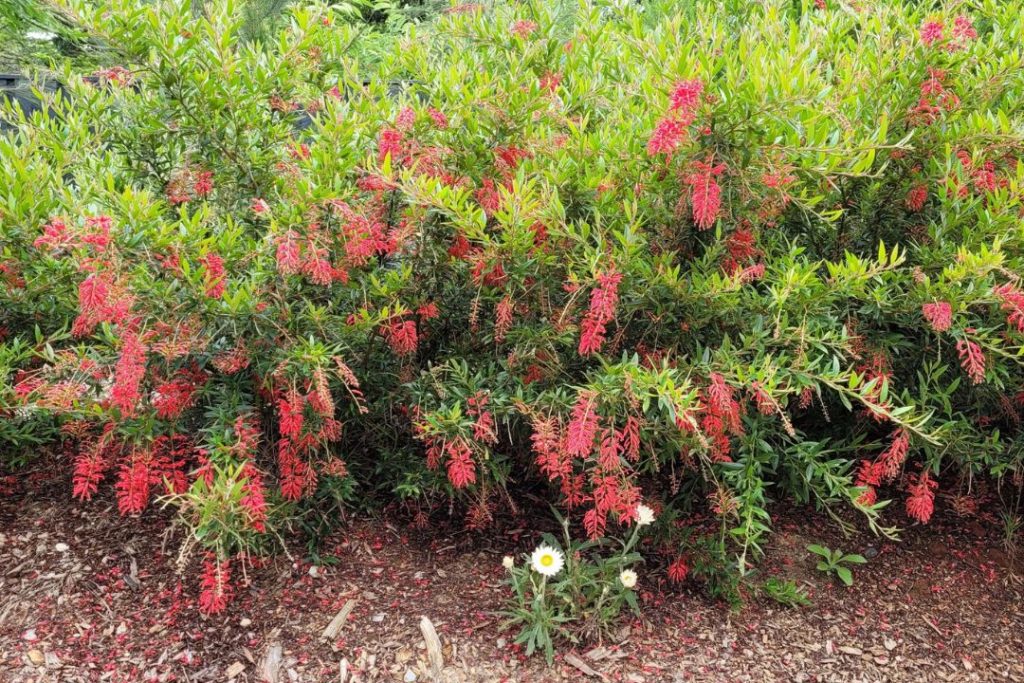
Photo courtesy of: https://anpsa.org.au/plant_profiles/grevillea-lady-o/
Grevilleas are native garden royalty, loved for their long-lasting, bird-attracting blooms. Depending on the variety, they can range from compact shrubs to small trees, but many popular types like Lady O grow to around 1.5 metres tall and wide. They thrive in full sun and are highly drought-tolerant, making them a great fit for the region’s hot summers. With vibrant red, orange, or yellow flowers blooming throughout much of the year, they add brilliant splashes of colour while providing nectar for native birds and bees. Minimal pruning after flowering keeps them neat and encourages even more blooms.
Lemon Myrtle (Backhousia citriodora)
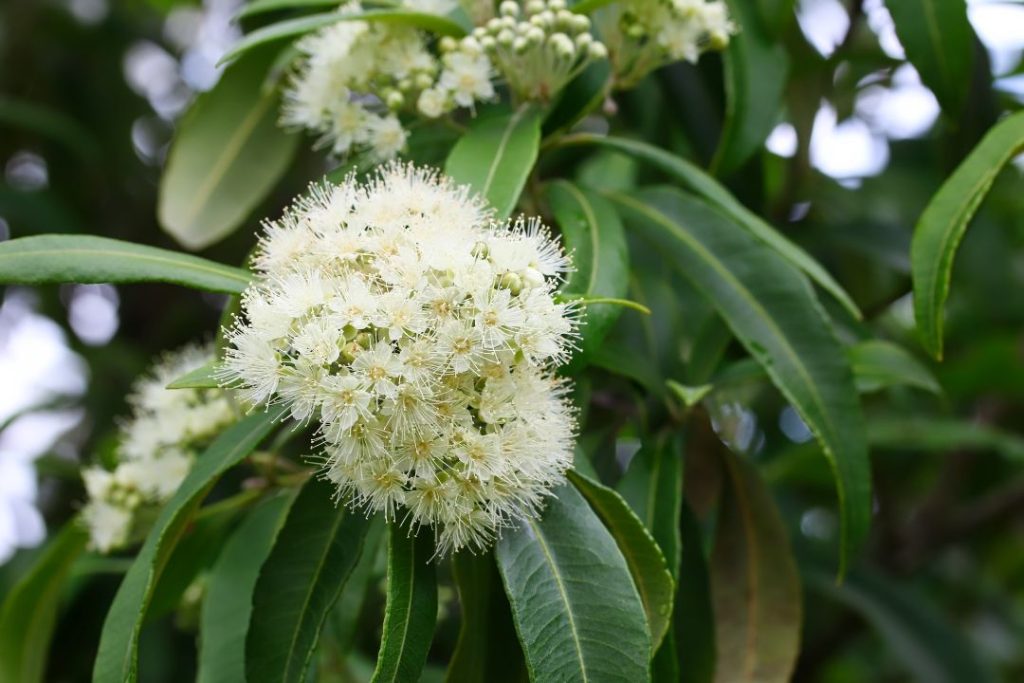
Lemon Myrtle offers more than just good looks. Its fragrant, lemon-scented leaves are prized for cooking, teas, and even homemade cleaning products. As a small tree or large shrub, it can reach up to 8 metres, but regular pruning keeps it manageable at around 2 to 4 metres tall, which is perfect for smaller spaces. It enjoys full sun to part shade and prefers some moisture, but it’s adaptable once established. In summer, it produces clusters of creamy white flowers that add visual interest and attract pollinators.
Correa
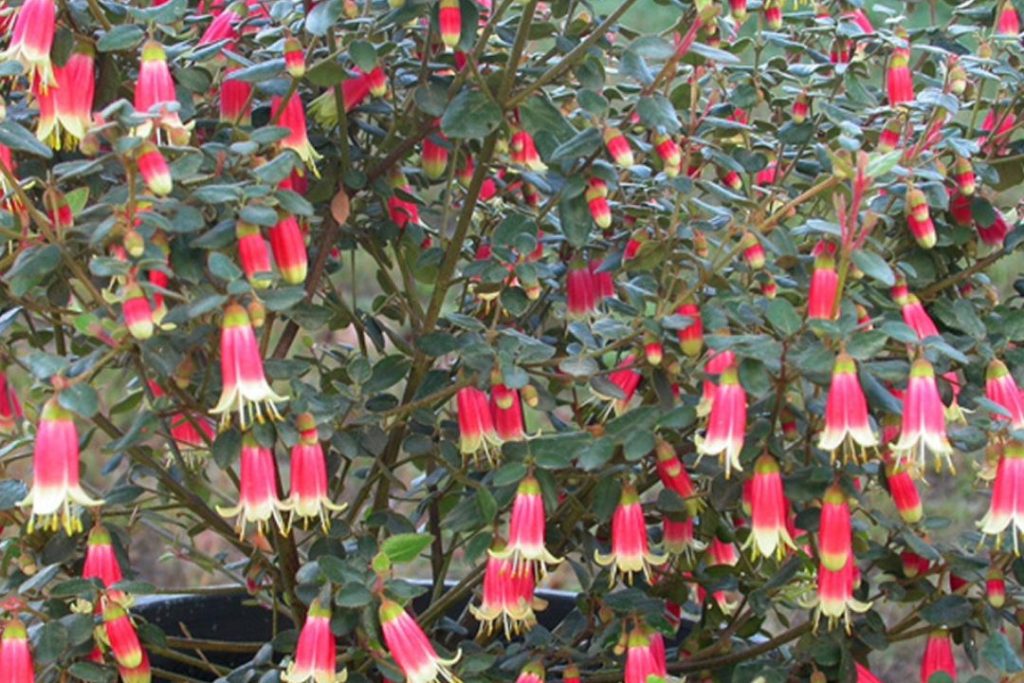
Photo courtesy of: https://gardeningwithangus.com.au/correa-canberra-bells-native-fuchsia/
Correa, also known as Native Fuchsias, are the understated stars of shady or part-shade gardens. These compact shrubs grow from 0.3 to 1.5 metres tall and produce delicate, bell-shaped flowers in soft pinks, reds, or greens, typically during autumn and winter when other plants are quiet. Correas are drought-tolerant and thrive in part-shade, making them ideal for underplanting or as border fillers. They’re low-maintenance, requiring only the occasional light prune to keep them tidy, and their flowers provide a food source for small birds and insects in the cooler months.
Slender Rice Flower (Pimelea linifolia)
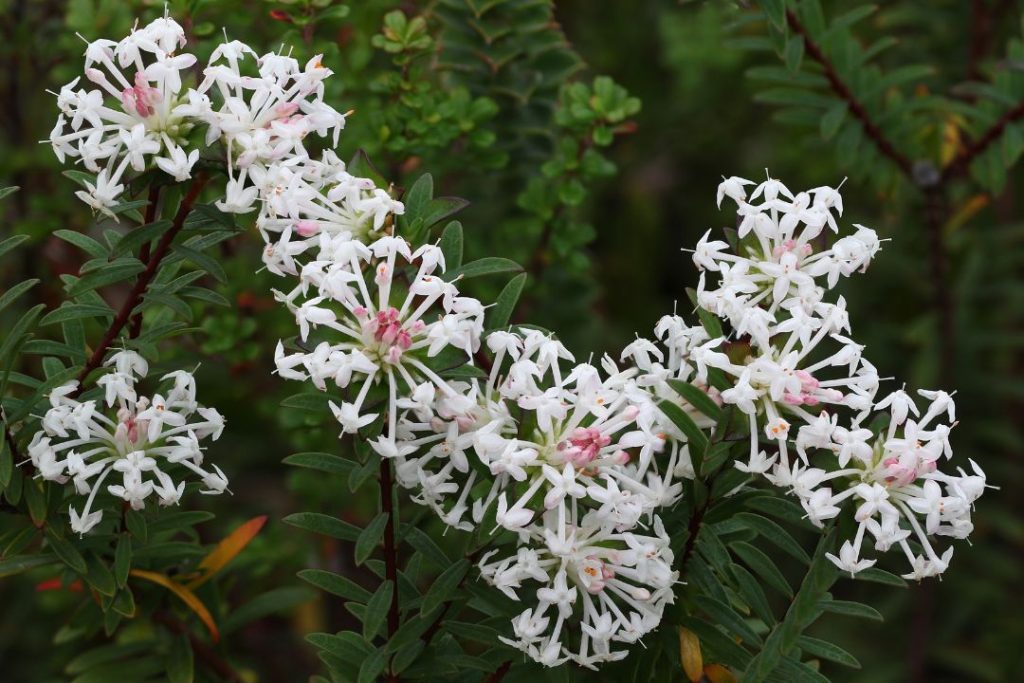
This dainty shrub brings a soft touch to native garden beds, growing up to 1 metre tall with slender, upright stems and clusters of small white flowers. Native to the Sydney region, it thrives in full sun to part shade and prefers well-drained soils. While it’s moderately drought-tolerant, a little extra water during dry spells helps it along. The white blooms appear from spring to summer and are excellent for attracting bees and butterflies. Slender Rice Flower adds fine texture and lightness to any planting scheme, making it a lovely complement to bolder natives.
Groundcovers
Groundcovers are more than just pretty additions to the garden. They help stabilise soil, reduce erosion, and suppress weeds, all while adding a lush, layered feel to your garden. These native varieties are tough enough for Western Sydney’s dry conditions and clay-heavy soils.
Fan Flower (Scaevola aemula)
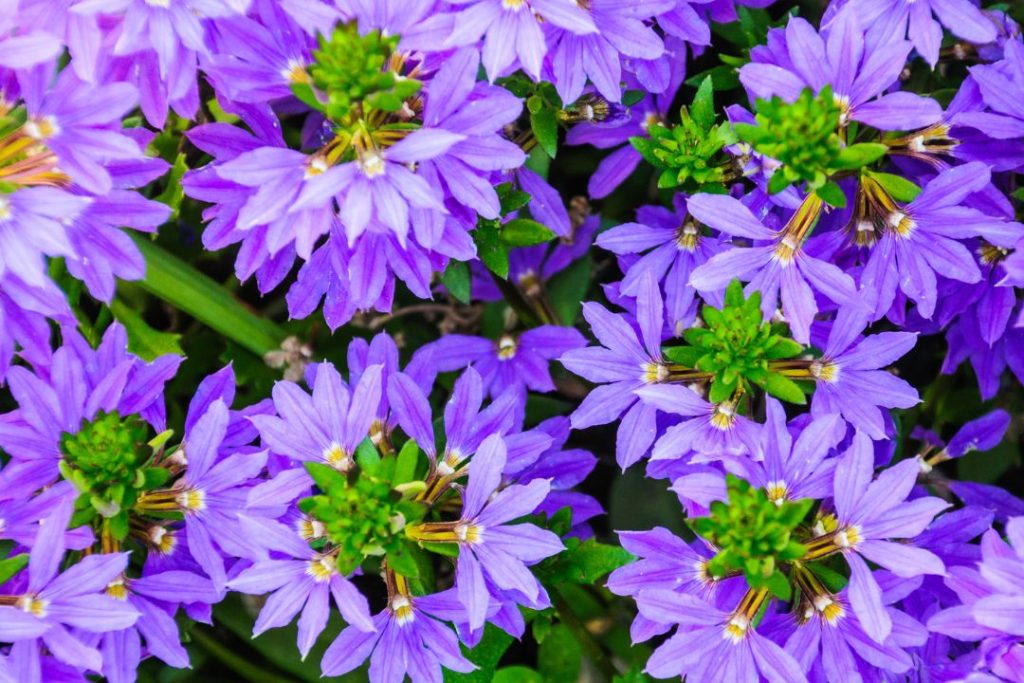
Fan Flower is a striking groundcover with its vibrant purple-blue blooms and sprawling habit. It forms a low, spreading mat about 15 to 30 centimetres high, with trailing stems that can stretch over a metre wide, making it perfect for softening garden edges, rockeries, or spilling over retaining walls. Thriving in full sun to part shade, it’s highly drought-tolerant and needs very little maintenance beyond an occasional prune to tidy up. The unique fan-shaped flowers bloom from spring through autumn, adding a splash of colour that’s irresistible to pollinators.
Yellow Buttons (Chrysocephalum apiculatum)
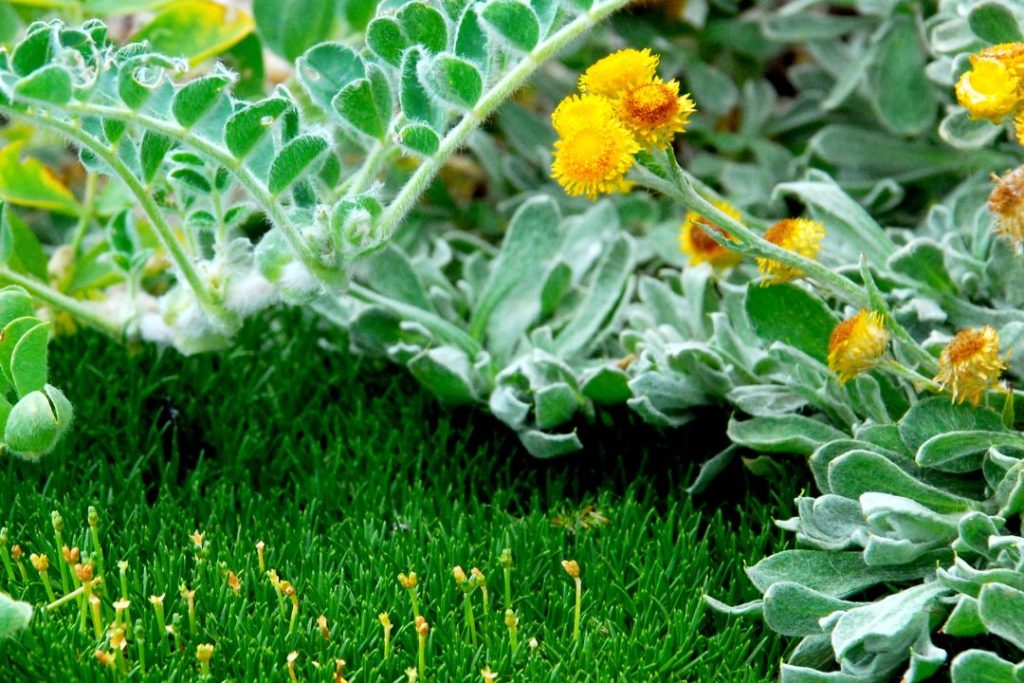
With its silvery foliage and cheerful yellow blooms, Yellow Buttons bring a soft, textural element to any garden bed. Growing up to 30 centimetres tall and spreading roughly a metre wide, it’s an excellent choice for borders or filling gaps between larger plants. This hardy groundcover thrives in full sun and tolerates dry conditions with ease, making it ideal for Western Sydney’s hot summers. It requires minimal care beyond the occasional trim to keep it neat, and the bright flowers provide year-round interest and a food source for pollinators.
Kidney Weed (Dichondra repens)
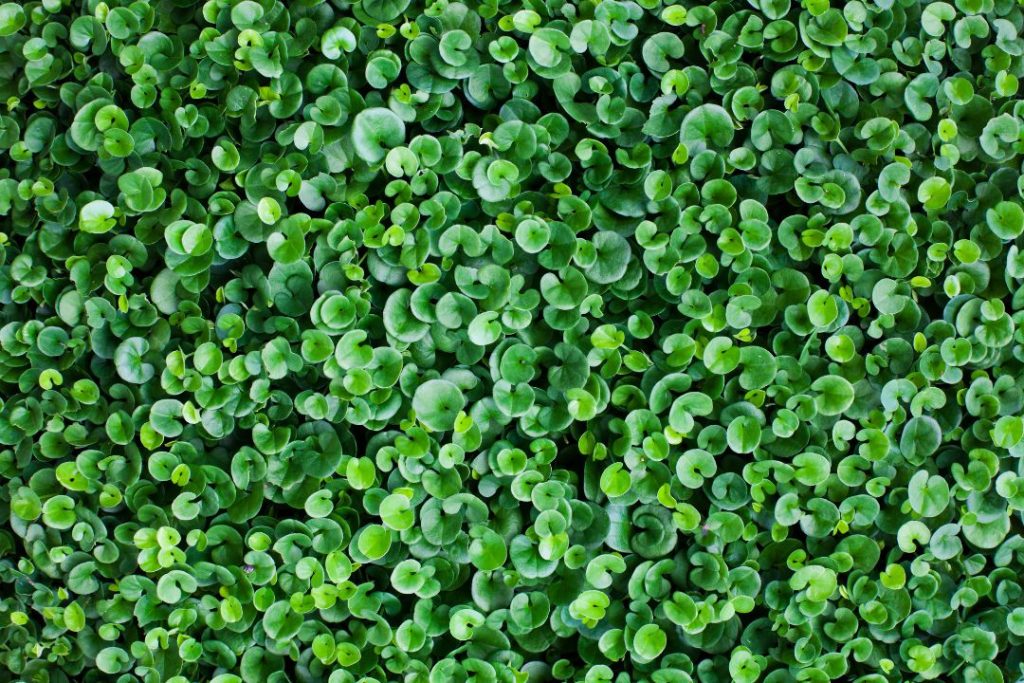
Kidney Weed is a lush, creeping groundcover that works beautifully as a soft, living carpet beneath trees or between pavers. Growing only about 5 to 10 centimetres high, it spreads quickly and forms a dense mat of rounded green leaves. It prefers part shade but can tolerate full sun if kept moist. Although it isn’t as drought-tolerant as some other natives, it bounces back well after dry periods. Its low profile and versatility make it perfect for softening hard landscaping or creating natural pathways.
Creeping Boobialla (Myoporum parvifolium)
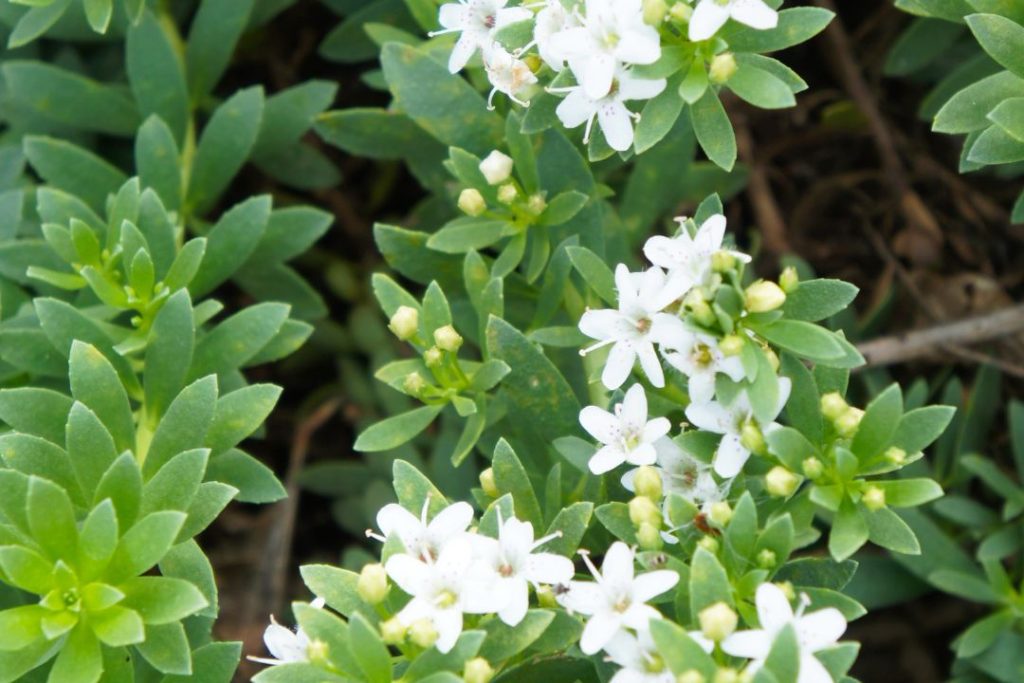
Creeping Boobialla is a tough, fast-growing groundcover that forms a dense, weed-suppressing mat of foliage. It reaches around 10 to 20 centimetres in height, but spreads generously, making it ideal for large open spaces, embankments, or under trees. Thriving in full sun to part shade, it’s highly drought-tolerant and handles clay soils with ease. Small white flowers appear in spring and summer, adding subtle charm while attracting insects. This hardy option requires very little maintenance, making it perfect for low-effort landscaping.
Pigface (Carpobrotus glaucescens)
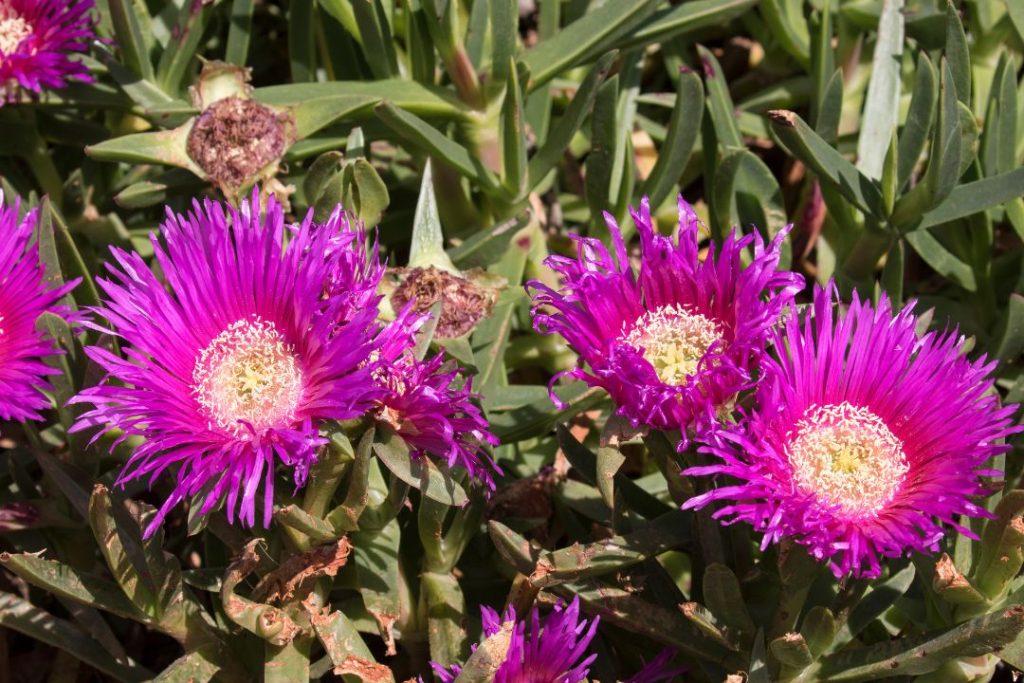
Pigface is a hardy succulent known for its fleshy green leaves and stunning, daisy-like flowers in shades of pink or purple. Growing up to 20 centimetres high and spreading over a metre wide, it’s perfect for sunny spots, retaining walls, or coastal gardens. Pigface is highly drought-tolerant, thriving in full sun and poor soils, including sandy or clay-heavy areas. Its fruits are edible and were traditionally used by indigenous Australians.
Climbers
Climbers are a clever way to green up fences, pergolas, or walls, adding height and softness without taking up valuable ground space. They’re ideal for smaller Western Sydney gardens where horizontal space is limited, but the impact can be huge.
Bower Vine (Pandorea jasminoides)
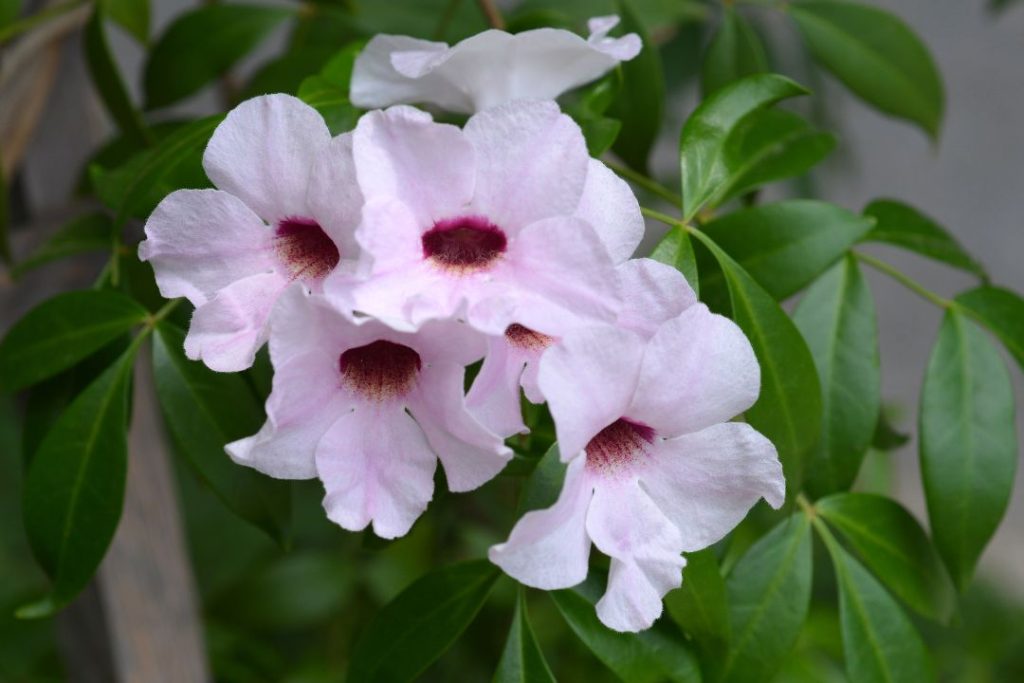
Bower Vine is a vigorous yet elegant climber, perfect for covering fences or adding vertical interest to a pergola. It can reach up to 3 to 5 metres tall, depending on its support, and thrives in full sun to part shade. This vine is drought-tolerant, but it appreciates some extra water during dry spells. Its standout feature is the profusion of soft pink or white trumpet-shaped flowers with darker throats that bloom from spring to autumn, attracting bees and adding a tropical feel to the garden. It requires minimal maintenance beyond the occasional prune to keep it under control.
Wonga Wonga Vine (Pandorea pandorana)
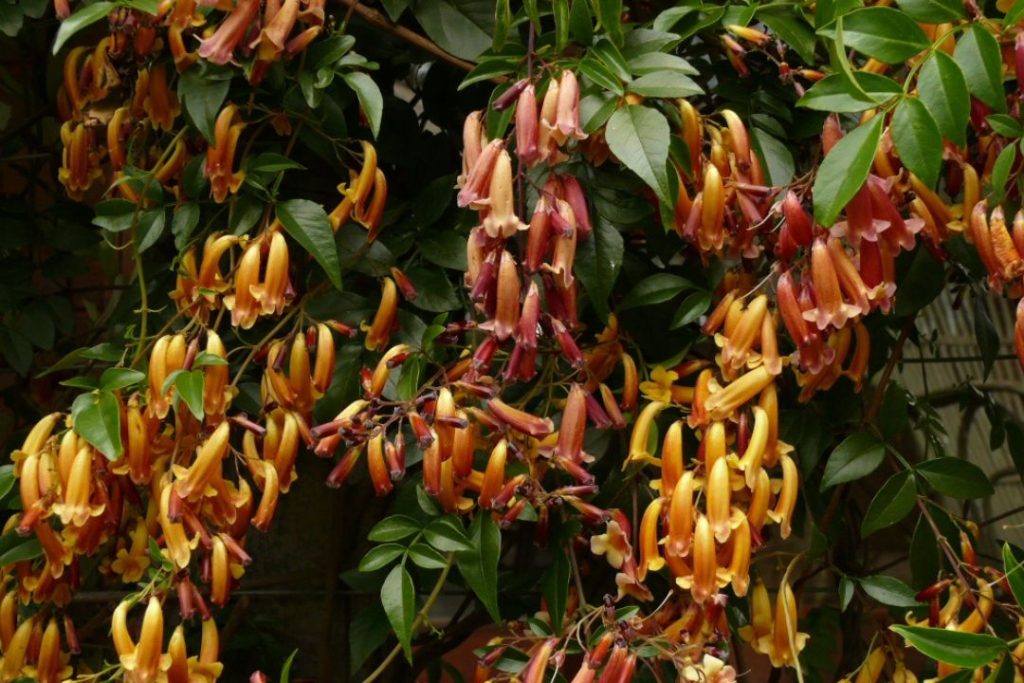
Photo courtesy of: https://gardeningwithangus.com.au/pandorea-pandorana-wonga-gold-wonga-wonga-vine/
Native to Australia’s east coast, Wonga Wonga Vine is a fast-growing climber that’s ideal for creating quick cover on trellises, fences, or pergolas. It can climb up to 6 metres or more, thriving in full sun to part shade. This hardy vine is drought-tolerant and handles a variety of soil types, including clay. Its creamy white to pale yellow tubular flowers appear in spring, often flecked with purple or brown, adding delicate beauty to its dense green foliage. Light pruning after flowering helps maintain its shape and encourages bushier growth.
Native Sarsaparilla (Hardenergia violacea)
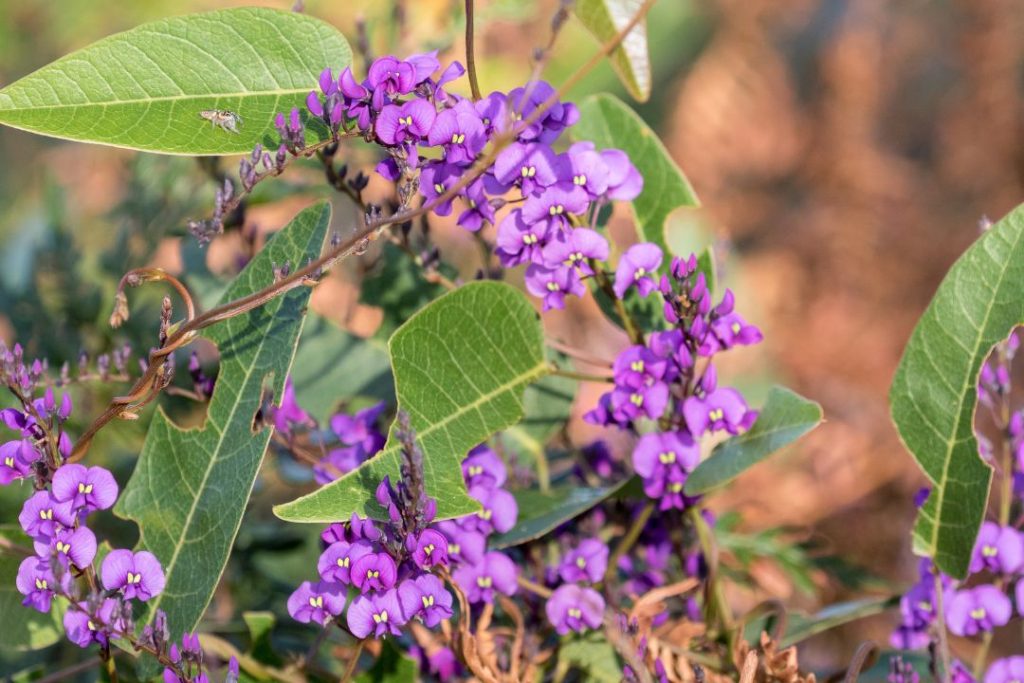
Native Sarsaparilla is a gorgeous, hardy climber that’s perfect for adding colour and texture to fences, trellises, or pergolas. Growing up to 2 to 4 metres when supported, it thrives in full sun to part shade and is highly drought-tolerant. Its standout feature is the cascade of vivid purple pea-like flowers that bloom from late winter through spring, often providing one of the first bursts of colour in the garden after the cooler months. Minimal maintenance is needed, just prune after flowering to keep it tidy and encourage dense growth.
Snake Vine (Hibbertia scandens)
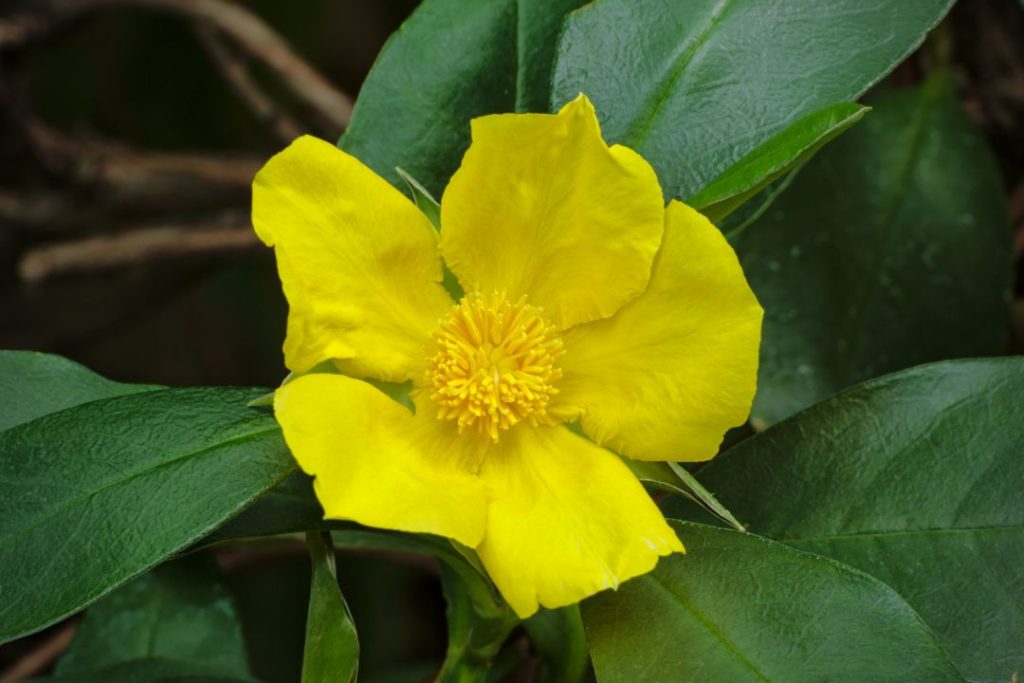
Snake Vine is a vigorous, adaptable climber that brings a cheerful burst of yellow flowers to the garden. Reaching up to 3 to 5 metres when climbing, it thrives in full sun to part shade and handles a range of soil types, including clay-heavy ground. It’s drought-tolerant and easy to manage with the occasional prune to control its spread. The large, golden blooms appear from spring to summer, brightening up walls, fences, or pergolas, and adding a wild, natural feel to the space.
Extra Tips for Planting & Maintaining a Native Garden
Creating a native garden isn’t just about picking the right plants. It’s also about setting them up for success. With Western Sydney’s hot, dry climate and clay-heavy soils, a little prep goes a long way. These simple tips will help your native plants survive and thrive.
1. Start with the Soil
Many regions in western Sydney have heavy clay soils that can be tough. It’s dense, slow-draining, and hard to work with. If your garden has heavy clay soils then it’s best if you can improve drainage by adding organic matter like compost or gypsum to break up the clay, before you start planting. This helps roots establish more easily and reduces the risk of waterlogging. For more tips on managing tricky soil conditions, ABC Gardening Australia shares helpful advice on solving soil challenges.
2. Water Deeply, but Infrequently
Native plants are drought-tolerant, but they still need some love early on. During establishment or the first 6 to 12 months, water deeply once or twice a week, then gradually reduce as the plants mature. This encourages deep root systems that can handle dry spells without stress. Always follow local water-wise guidelines to ensure you’re using water efficiently. On their website, Sydney Water provides up-to-date water-wise practices.
3. Mulch for Protection
A thick layer of native mulch, like eucalyptus mulch or leaf litter, helps retain moisture, suppress weeds, and keep the soil cool. Aim for 5 to 7 centimetres deep, but keep it away from the plant stems to prevent rot.
4. Prune for Shape and Growth
Many natives, especially flowering shrubs and hedges, respond well to light pruning. Trim after flowering to encourage bushier growth and more blooms next season. Don’t be afraid to give your plants a tidy-up because these plants can take it.
5. Go Easy on the Fertiliser
Most native plants are adapted to nutrient-poor soils and don’t need much feeding. If you do fertilise, choose a low-phosphorus, native-specific fertiliser to avoid damaging sensitive roots. Less is more when it comes to feeding your natives.
For even more ideas on keeping your garden easy to care for, check out our post on low maintenance gardening tips.
Craft a Resilient, Beautiful Garden
Choosing native plants isn’t just about saving time and water, but also about creating a thriving ecosystem that works with the land, not against it. With the right mix of shade trees, screening plants, flowering shrubs, groundcovers, and climbers, you can design a garden that’s lush, layered, and alive year-round. By selecting plants that are naturally adapted to Western Sydney’s unique climate and soils, you’re setting yourself up for long-term success. These plants know how to handle hot summers, dry spells, and heavy clay.
Looking to transform your garden with stunning native plants? Our team specialises in landscaping in Western Sydney, offering expert design advice and professional planting services tailored to your space. Whether you’re starting fresh or refreshing an existing garden, we’ll help you choose the right plants, prep the soil, and bring your vision to life, one resilient, beautiful plant at a time.
